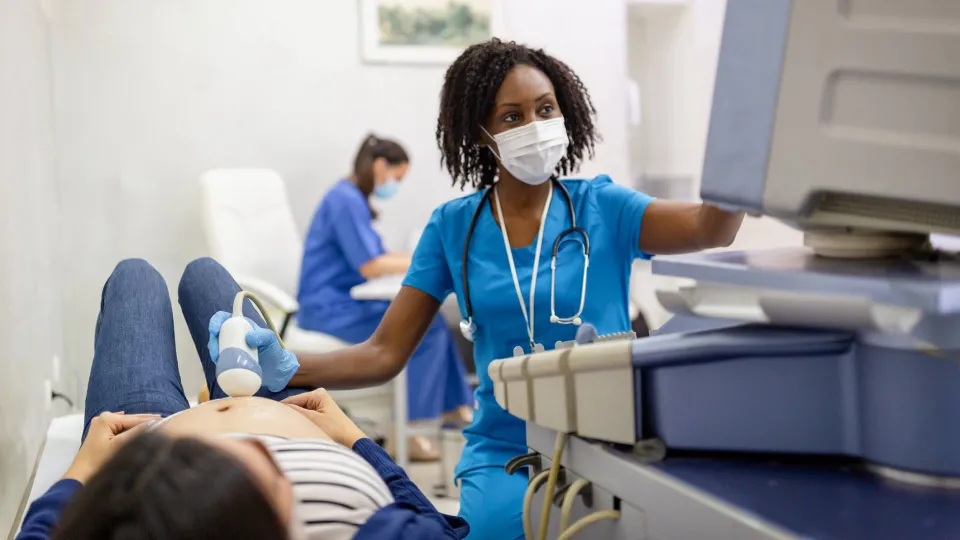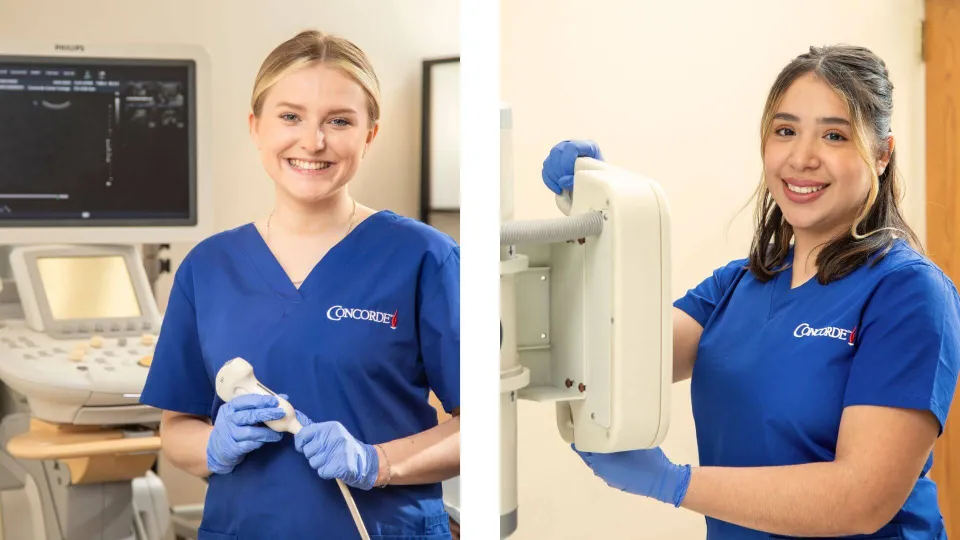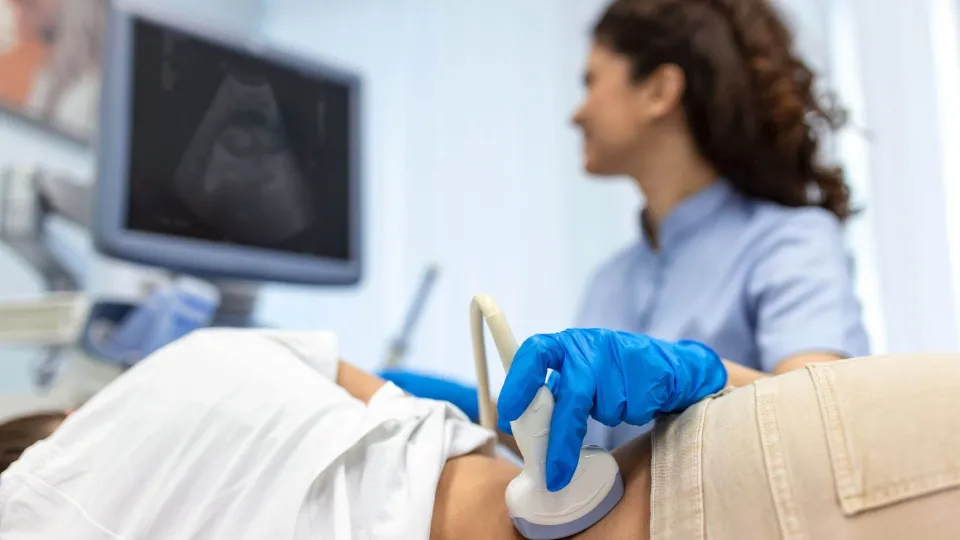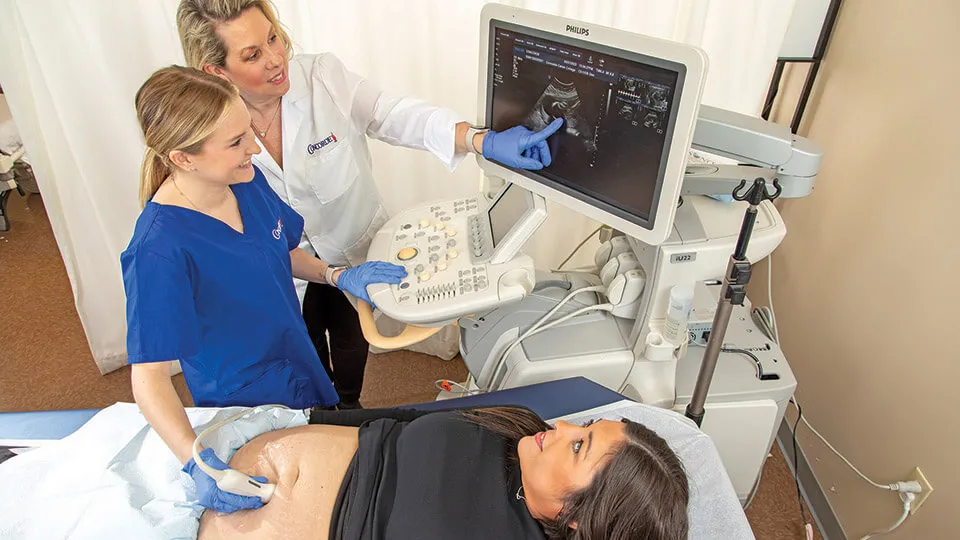
A diagnostic medical sonographer is a professional who uses special imaging equipment to examine internal organs, tissues, blood vessels, and other parts of the body. Sonography uses sound waves to capture images of these internal structures. This is a non-invasive, radiation-free modality that eliminates many of the discomforts and concerns associated with other types of imaging procedures. Diagnostic medical sonography is a rapidly growing field, making it an attractive career choice.
Education and Training Requirements
The most common program for diagnostic medical sonographers is a two-year associate degree. Students usually receive classroom and clinical training. Concorde Career College's Diagnostic Medical Sonography program can be completed in as little as 20 months and currently includes 84.5 credit hours, 300 lab hours, and 960 clinical hours.
The curriculum for a diagnostic medical sonography program typically covers anatomy, physiology, and medical terminology. Students also learn how to capture and interpret sonographic images. Concorde's program is designed to help graduates develop their clinical competence, critical thinking, problem-solving, and communication skills.
Accreditation
Accreditation is a reliable sign that an educational institution has been vetted by an outside source and received its stamp of approval. The primary accrediting body for diagnostic medical sonography programs is the Commission on Accreditation of Allied Health Education Programs. CAAHEP has accredited more than 150 sonography programs throughout the United States. Certification policies often require that students graduate from a CAAHEP-accredited program.
Clinical Training
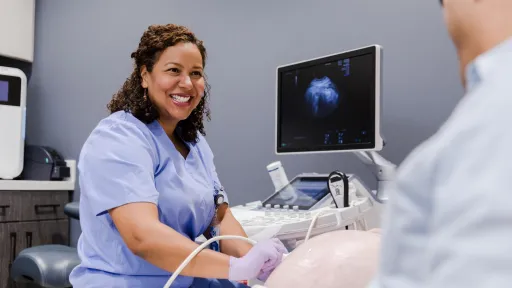
Clinical training is essential for diagnostic medical sonographers because it allows students to gain hands-on experience by practicing on real patients while under supervision. The theory of the classroom comes to life in a clinical setting, and students receive instruction, guidance, and correction in a real-world environment. Depending on the program, clinical rotations may occur at several different sites. Some placements may occur outside the local area, requiring students to arrange their own transportation.
Related: The Ultimate Guide to a Career in Sonography: Here's What to Know
Certification and Licensure
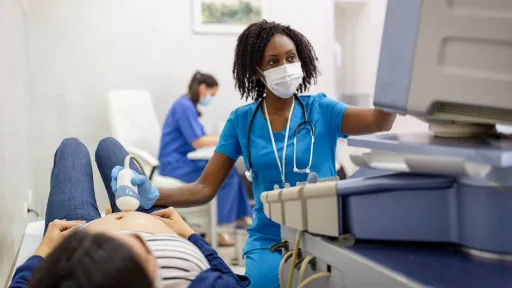
Proper certification and licensure may improve employability. Certain states mandate licensing as a requisite to working as a diagnostic medical sonographer. It's important to know the requirements when seeking employment and prepare ahead with the appropriate credentials.
Related: How To Become a Sonographer: Education, Certification & Employment
Certification With the American Registry for Diagnostic Medical Sonography
The American Registry for Diagnostic Medical Sonography is the primary certifying body for diagnostic medical sonographers. Though certification is voluntary, it's often recommended, as a valid ARDMS license may demonstrate dedication and qualifications to employers.
ARDMS certification requirements include passing a Sonography Principles & Instrumentation (SPI) exam and a specialty exam. Here are some of the available specialties:
- Abdomen.
- Breast.
- Fetal Echocardiography.
- Obstetrics & Gynecology.
- Pediatric Sonography.
Applicants must pass both exams within a five-year period. After passing the exams, applicants receive the Registered Diagnostic Medical Sonographer, or RDMS, designation. The first-time pass rate for the SPI exam was 72% in 2023. Those who don't pass the exam may reapply three days after receiving their score and re-take the test 60 days after the initial exam.
To maintain certification, diagnostic medical sonographers must complete 30 continuing medical education hours every three years, pay an annual ARDMS renewal fee, and submit a renewed attestation stating that they have and will follow the ARDMS Compliance Policies and rules.
State Licensure
In most states, an ARDMS license is voluntary. However, New Hampshire, New Mexico, North Dakota, and Oregon have mandatory licensure for sonographers. Each state has its own requirements, and it's important to research the individual conditions when looking to obtain licensure from one of these states.
While the specific requisites vary, applicants often need to supply verification if they have been licensed in another state, official transcripts from their diagnostic medical sonography program, and proof of certification with another organization. North Dakota and Oregon also require applicants to pass a registry exam.
Specializations
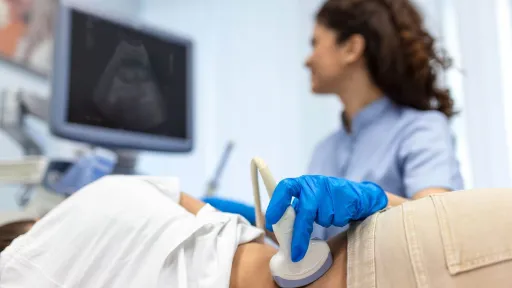
Currently, there are several specialties available for diagnostic medical sonographers. Specializing in neurosonography, designated as NE, was previously available but has currently been removed. Sonographers who already have the NE certification are still able to maintain this credential. The following table depicts some of the areas in which sonographers may choose to specialize, a description of the area the sonographer is responsible for imaging, and the credentials associated with certification in that area:
| Specialization | Imaging Description | Certification |
| Abdominal Sonography | Abdominal organs, including the kidneys, liver, and pancreas. | RDMS-AB |
| Obstetric and Gynecological Sonography | Female reproductive system, often but not always during pregnancy. | RDMS-OB/GYN |
| Cardiac Sonography (Echocardiography) | Heart and blood vessels. | RDCS (Registered Diagnostic Cardiac Sonographer) |
| Vascular Sonography | Circulatory system. | RVT (Registered Vascular Technologist) |
| Breast Sonography | Breast tissue, primarily for breast cancer diagnosis. | RDMS-BR |
| Musculoskeletal Sonography | Muscles, ligaments, joints, and tendons. | RMSKS (Registered Musculoskeletal Sonographer) |
| Pediatric Sonography | Patients during childhood and adolescence. | RDMS-PS |
| Neurosonography | Brain and nervous system. | RDMS-NE (currently discontinued) |
| Fetal Echocardiography | Fetal heart during pregnancy. | RDMS-FE |
Related: What Are the Different Types of Sonographers?
Career Outlook
Diagnostic medical sonographers are part of a fast-growing field with ample job opportunities. The Bureau of Labor Statistics projects job opportunities for diagnostic medical sonographers to increase by 15% between 2023 and 2033. This is nearly four times faster than the average growth for all U.S. occupations, which is projected to be 4%.
Some of the demand for sonographers comes from the aging baby boomer population. Not only are these individuals retiring from the workforce, but they're entering a demographic that often needs additional health care services. Tumors and blood clots, which are more common in older adults, are both commonly diagnosed with sonography. Sonography is a painless, non-invasive treatment, which makes it a suitable option for aging patients with other conditions as well.
Most job opportunities for diagnostic medical sonographers are in physicians' offices, outpatient care facilities, and medical or diagnostic laboratories.
Continuing Education and Career Advancement
To maintain an ARDMS license, it's necessary to complete 30 continuing medical education (CME) credits every three years. Sonographers may earn these credits through online, in-person, or correspondence courses. There are numerous organizations that offer CMEs, including the following:
- Society of Diagnostic Medical Sonography.
- Commission on Accreditation of Allied Health Education Programs.
- Cardiovascular Credentialing International.
- American Registry of Radiologic Technologists.
- American Society of Echocardiography.
- American Institute of Ultrasound in Medicine.
- American College of Radiology.
Not only are CMEs necessary to maintain an ARDMS license, but they also equip diagnostic medical sonographers with the knowledge and skills to advance their career. For example, a sonographer may pursue a specialization to open up more opportunities within a specific field of diagnostic imaging.
A diagnostic medical sonographer may also advance in their career and take on more leadership responsibilities by working as a lead sonographer or department manager. Research and teaching positions may become available for diagnostic medical sonographers as they continue their education.
A career as a diagnostic medical sonographer offers a rewarding opportunity with a positive career outlook. Begin the path toward this career by exploring Concorde's Diagnostic Medical Sonography associate degree program, designed to equip graduates with the skills and knowledge to enter the profession.
ARDMS. “Sonography Principles and Instrumentation – ARDMS SPI Exam”. https://www.ardms.org/get-certified/spi/
ARDMS. “Neurosonography Registrant.” https://www.ardms.org/get-certified/rdms/neurosonology-registrant/
Bureau of Labor Statistics. “Diagnostic Medical Sonographers and Cardiovascular Technologists and Technicians.” https://www.bls.gov/ooh/healthcare/diagnostic-medical-sonographers.htm#tab-6
Take The Next Step Towards a Brighter Future
Interested in learning more about our Diagnostic Medical Sonography program?
We have a Concorde representative ready to talk about what matters most to you. Get answers about start dates, curriculum, financial aid, scholarships and more!

